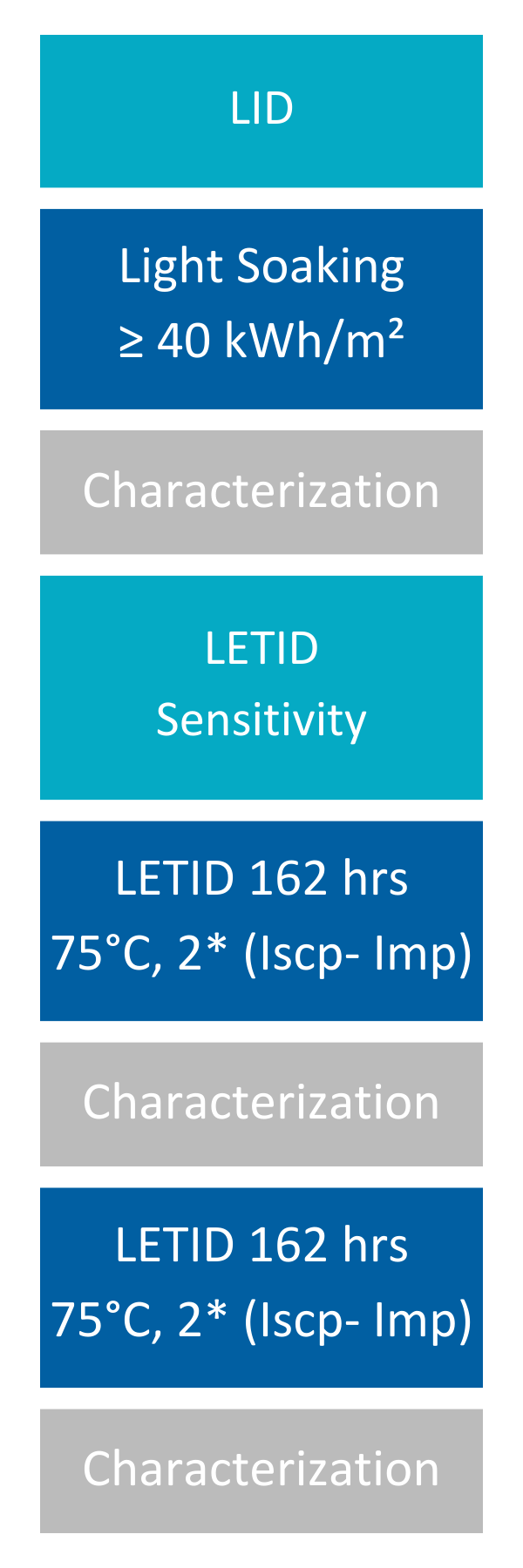Why LID and LETID testing matters
In 2021, Kiwa PI Berlin, was contacted regarding underperformance at a >~100 MW solar plant in the MENA region. A review of the site monitoring data, IV curve traces, and O&M records pointed to module-level issues just 18 months after the site became operational.
Kiwa PI Berlin conducted lab-based testing on 20 modules from the site, 16 of which came from the underperforming section of the array, while the other four samples were of the same model type but from a different section. Flash testing revealed that on average the 16 modules underperformed the manufacturer’s guaranteed power by 6.7%. The average power for the four unaffected modules was 7.8% higher than the average power for the 16 affected modules.
EL images revealed a checkerboarding effect that is common on LETID affected modules. The four unaffected modules did not show this pattern.
Kiwa PI Berlin performed an LETID test on two of the affected samples, which resulted in a minor power decrease, suggesting that the full LETID power loss had already occurred in the field. An LETID recovery test was then performed, which resulted in an average power increase of 6.1%. Improvements in the uniformity of the EL images indicated a significant LETID recovery. These results proved that LETID was a key factor in the underperformance, and that at least two distinct BOMs of the same model type had been delivered to site: one that was LETID susceptible, and another that was not.
Following Kiwa Solar’s Module Procurement Best Practices including PVEL PQP testing, BOM specification in procurement contracts and batch testing would have greatly reduced the likelihood of LETID susceptible modules being shipped to the site.




EL images from the LETID recovery test. Initial results on the left, post-recovery test on the right. Had there been a different failure mode the LETID recovery test would not have resulted in this change to the EL images.
Materials assessed
|
LID and LETID are entirely cell-based phenomena. PVEL’s test results indicate that no other materials impact these degradation modes.
|
|
Test procedure
|
To measure LID, PVEL installs a statistically significant sample of 17 modules outdoors, running at (or close to) their maximum power point while being exposed to ≥ 40 kWh/m2 of light soaking. If the average power loss exceeds 1% following this initial exposure all modules are placed back outdoors for another ≥ 40 kWh/m2 of light soaking. To measure LETID, two modules are placed in an environmental chamber at 75°C while a low current is injected for 324 hours. The current level mimics inverter-connected operation in full sun at maximum power point. Modules undergo intrim flash testing and EL imaging after 162 hours. The test protocol is designed to slowly approach the maximum LETID rate and not instigate the recovery process or activate other degradation modes. |
 |



